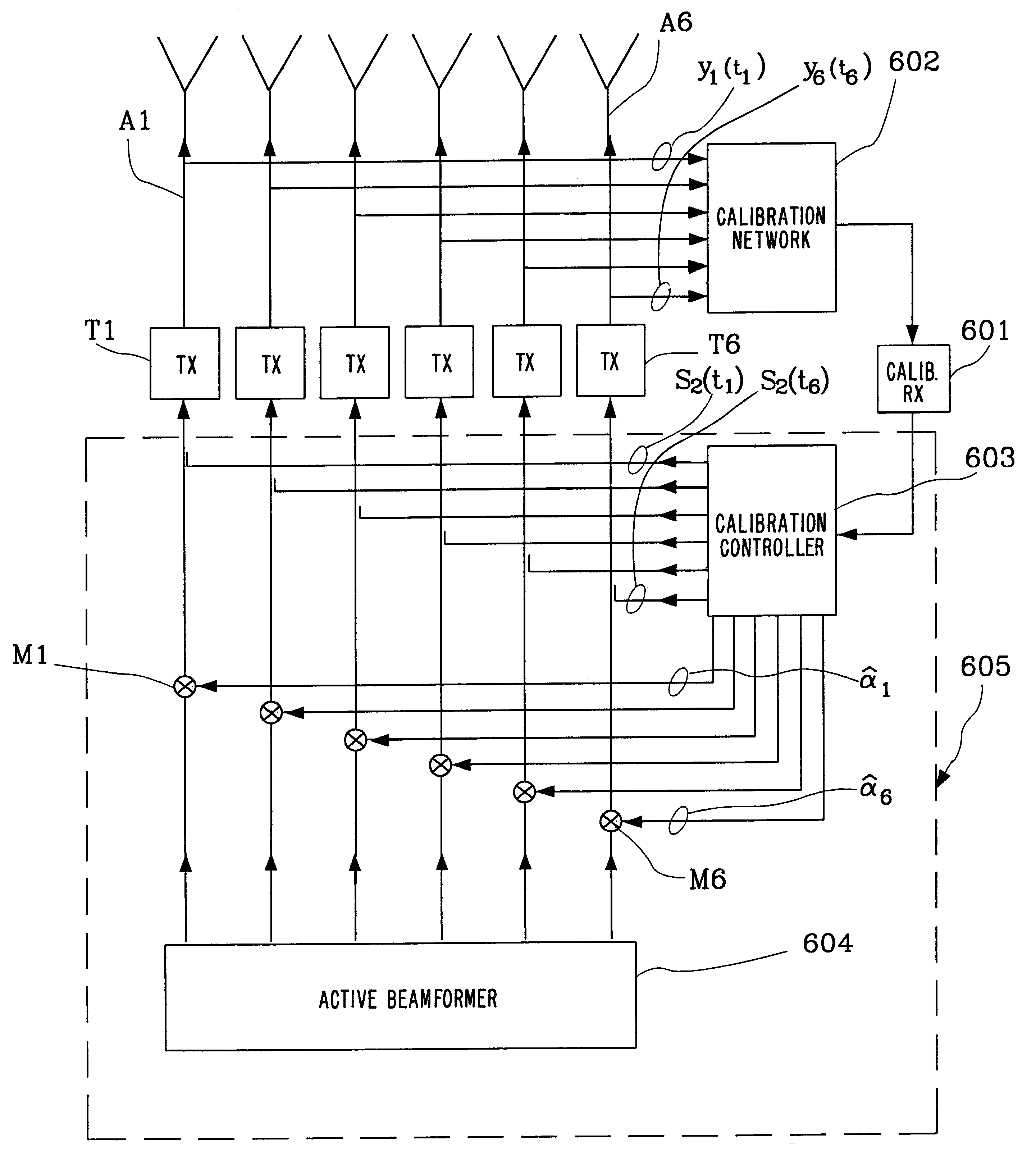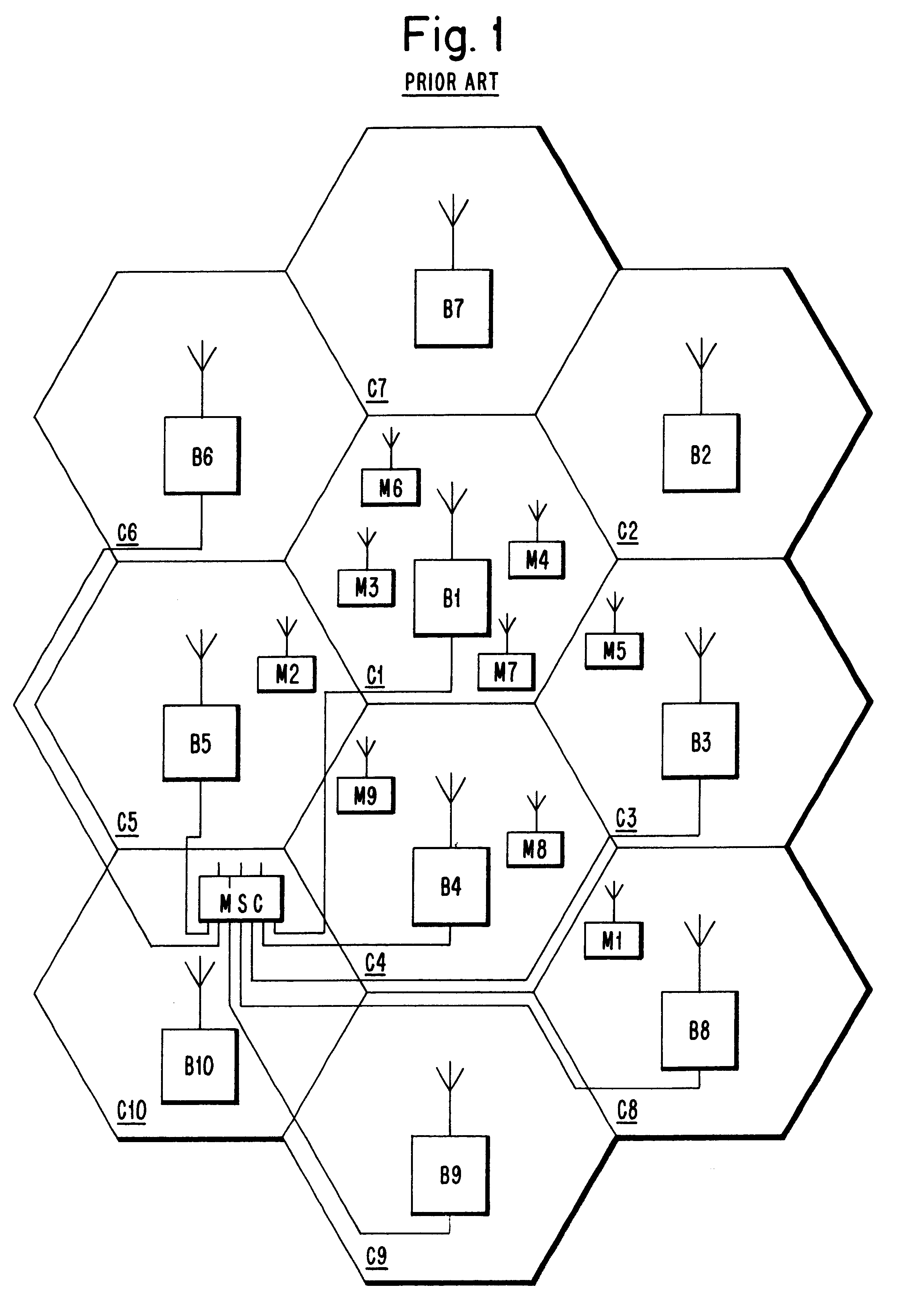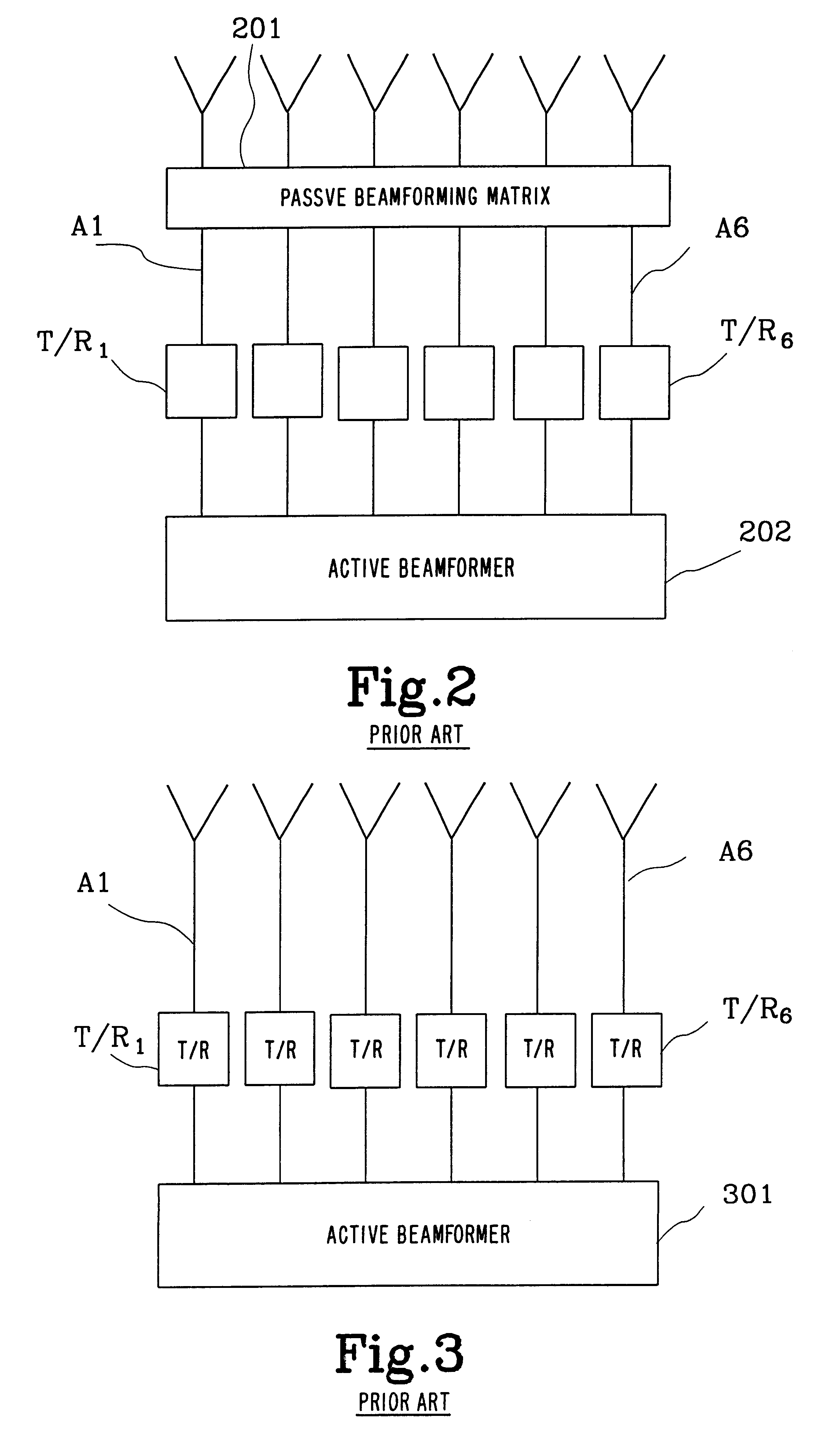Antenna array calibration
a technology for antenna arrays and antenna beams, applied in the direction of antennas, instruments, electrical equipment, etc., can solve the problems of antenna beam shape and antenna beam direction errors, and achieve the effect of improving the performance of the radio communication system, increasing the beam shape accuracy, and being easy to us
- Summary
- Abstract
- Description
- Claims
- Application Information
AI Technical Summary
Benefits of technology
Problems solved by technology
Method used
Image
Examples
first embodiment
In the transmission calibration the same calibration signal is used for calibrating all transmitting antenna sections. This means that the calibration controller comprises only one signal generator. If all transmitting antenna sections were to send the same signal simultaneously the single calibration receiver would interpret the sampled data as one signal and therefore not be able to distinguish data from separate transmitting antenna sections. Hence each of the transmitting antenna sections has to be calibrated separately in time in this example.
The calibration signal S2(t.sub.1) is first injected into a first, reference, transmitting antenna section A1 at a first time t.sub.1. The calibration network 602 samples this transmitting antenna section when the calibration signal has passed the transmitting components T1. The distorted signal y1(t.sub.1) is received at a first collection time by the calibration receiver 601.
Thereafter the same calibration signal S2(t.sub.2) is injected ...
second embodiment
In the calibration of an antenna array in a FDMA-system, according to option b), free frequencies are used for a short period of time, for example the time between the termination of a call on a certain frequency and the set up of another call using that frequency.
third embodiment
In the calibration of an antenna array in a FDMA-system, according to option c), a low-power spread spectrum signal is superimposed on top of a specific carrier.
The present invention severely reduces the accuracies required of the components connected to each antenna section because the present invention measures and corrects for errors generated by these components. In addition, the system used for calibration simultaneously tests the devices associated with each antenna section so as to verify that the antenna array is working properly.
The invention provides a method and apparatus for calibrating the antenna sections of an antenna array comprised in a base station. The calibration can be performed essentially without interrupting or disturbing the normal traffic flow in the radio communication system. The calibration apparatus according to the invention only comprises one single calibration transmitter and one single calibration receiver, used to calibrate the whole receiving and ...
PUM
 Login to View More
Login to View More Abstract
Description
Claims
Application Information
 Login to View More
Login to View More - R&D
- Intellectual Property
- Life Sciences
- Materials
- Tech Scout
- Unparalleled Data Quality
- Higher Quality Content
- 60% Fewer Hallucinations
Browse by: Latest US Patents, China's latest patents, Technical Efficacy Thesaurus, Application Domain, Technology Topic, Popular Technical Reports.
© 2025 PatSnap. All rights reserved.Legal|Privacy policy|Modern Slavery Act Transparency Statement|Sitemap|About US| Contact US: help@patsnap.com



